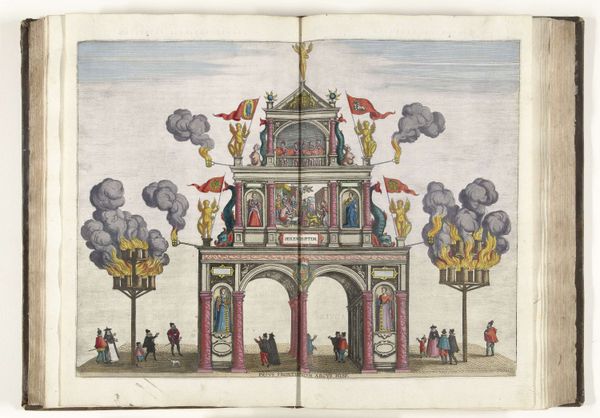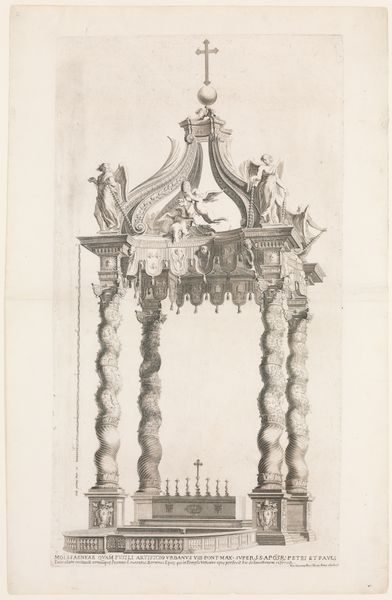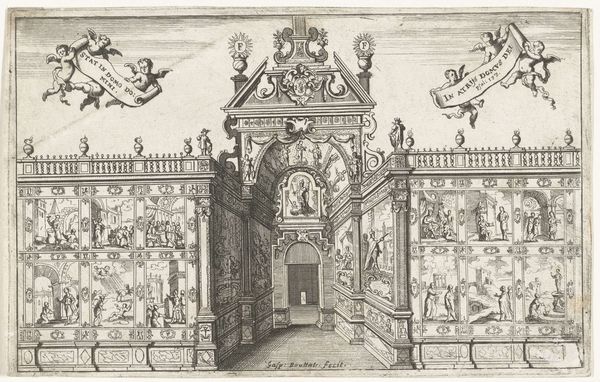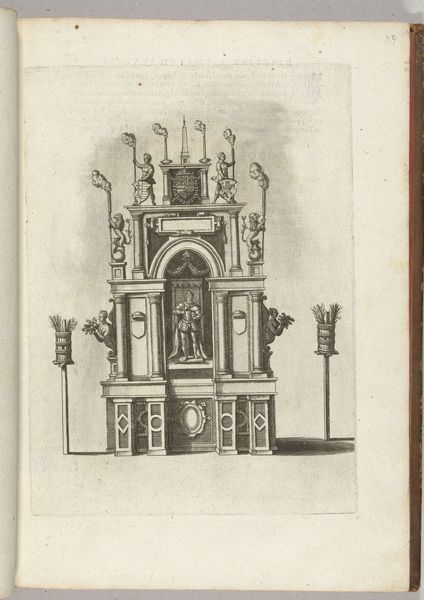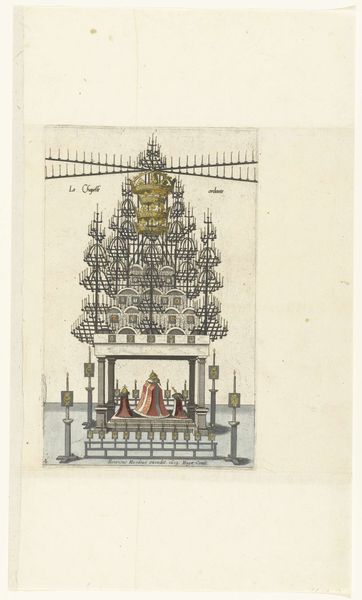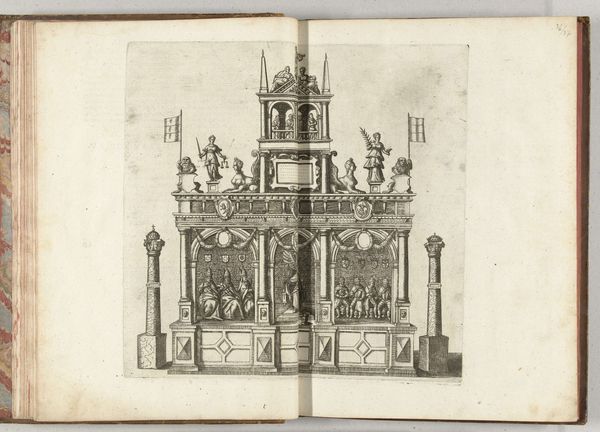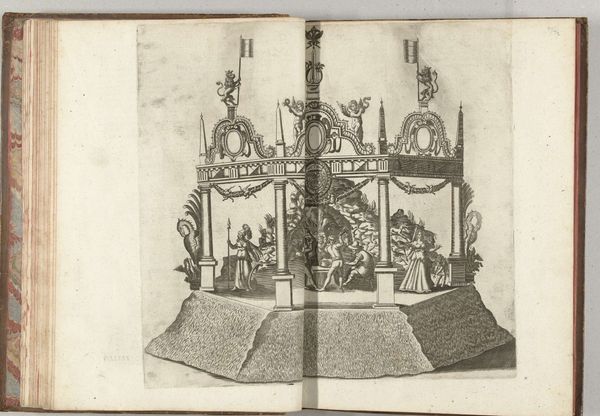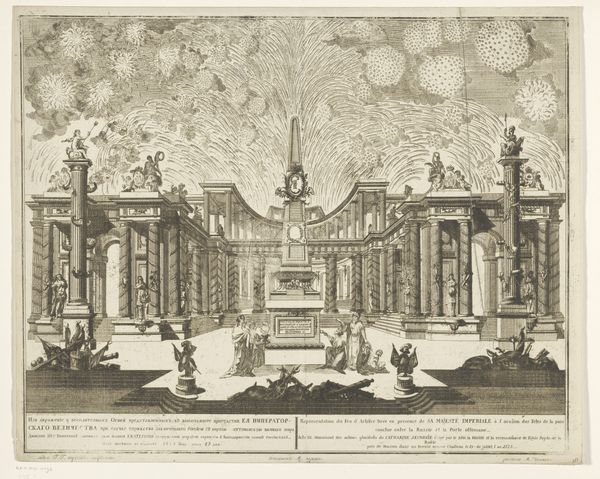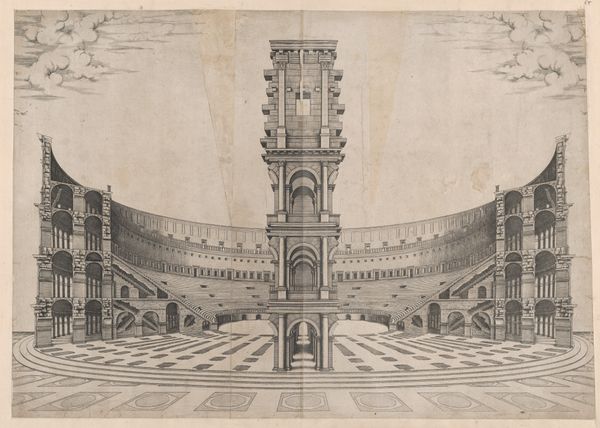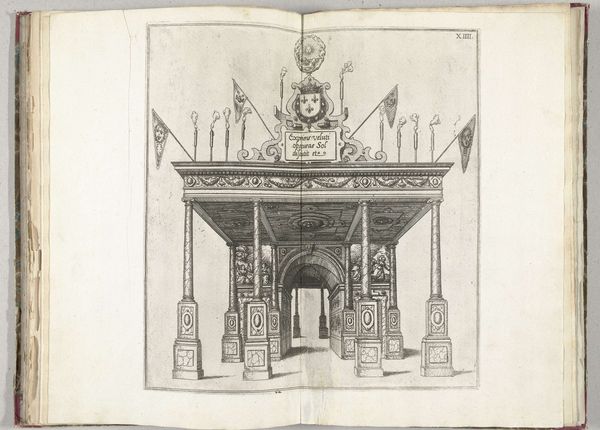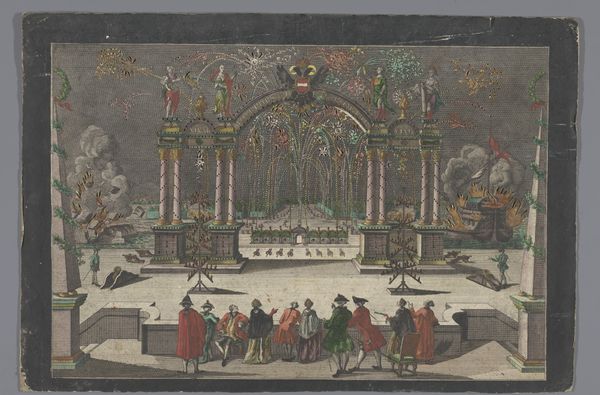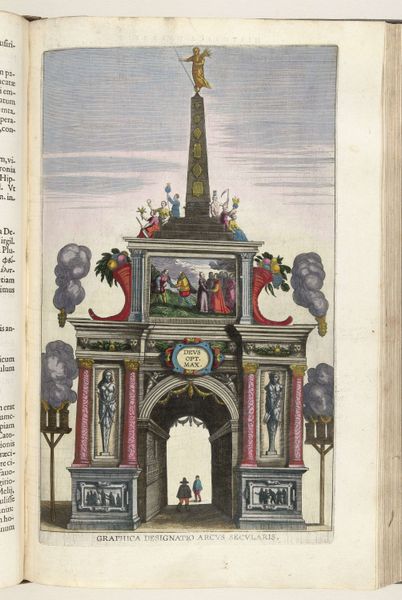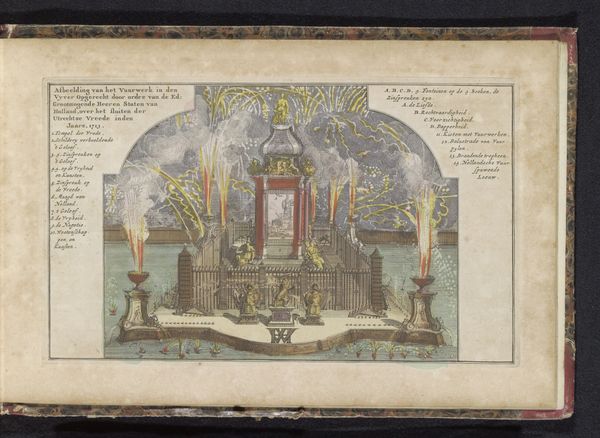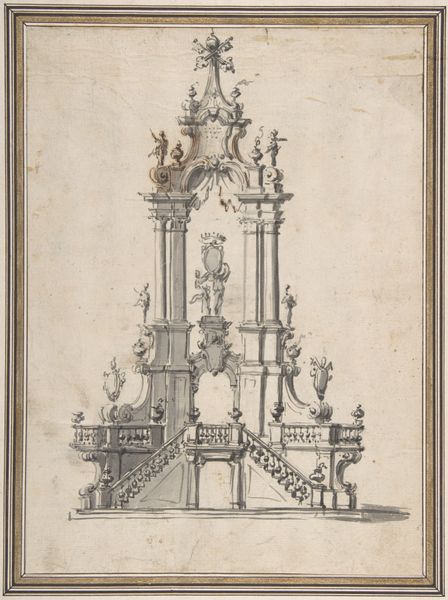
print, engraving
#
baroque
# print
#
coloured pencil
#
engraving
Dimensions: height 326 mm, width 436 mm
Copyright: Rijks Museum: Open Domain
Pieter van der Borcht created this print of ‘The Portuguese Arch of Honor’ in 1599. The artwork shows a temporary structure erected to celebrate a state visit or a significant event in Portugal. Elaborate temporary structures like this one were a common feature of civic life in the Netherlands, especially during periods of political transition or celebration. They were a form of propaganda intended to impress visitors and locals alike, reinforcing the authority and legitimacy of the ruling powers. The arch is adorned with allegorical figures, coats of arms, and scenes of Portuguese history, all designed to convey messages about power, wealth, and cultural achievement. Note the classical architectural elements, reflecting the influence of the Renaissance and a desire to associate the Portuguese monarchy with the glory of ancient empires. To fully understand this image, one needs to consult historical records: accounts of state visits, descriptions of civic ceremonies, and the emblem books which were popular at the time. This reveals the social and institutional contexts in which the artwork was created and consumed. The image is a fascinating window into the complex relationship between art, politics, and society in the early modern period.
Comments
No comments
Be the first to comment and join the conversation on the ultimate creative platform.
